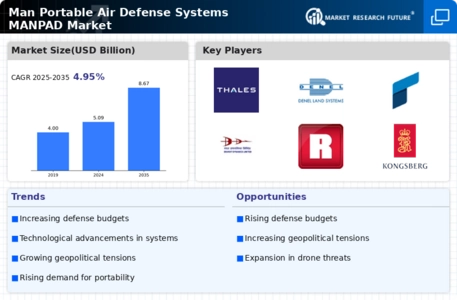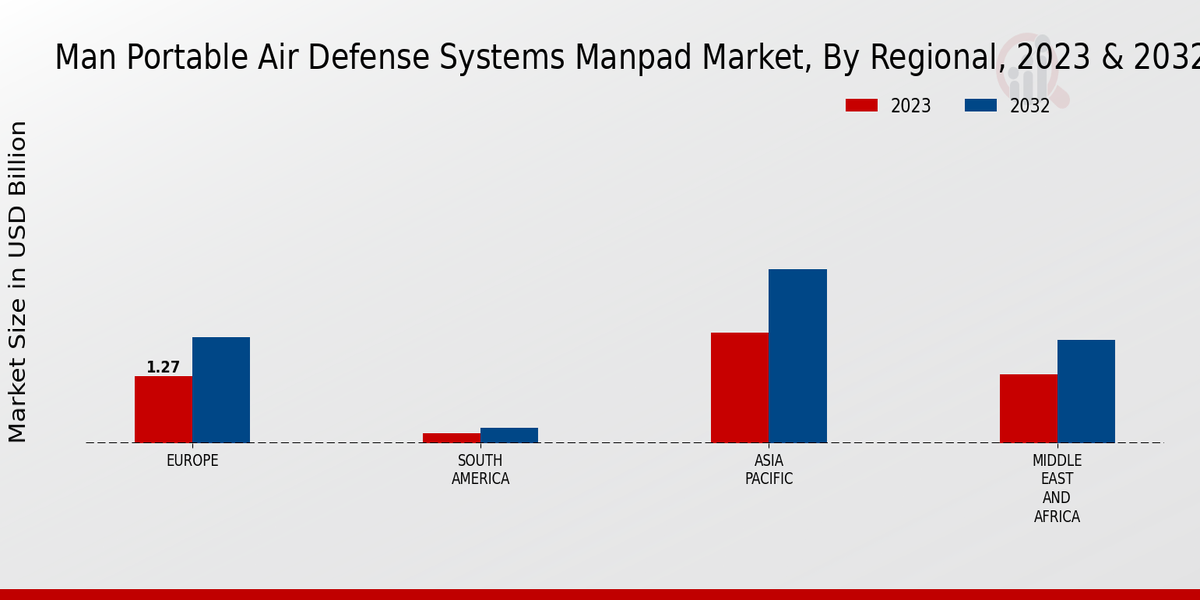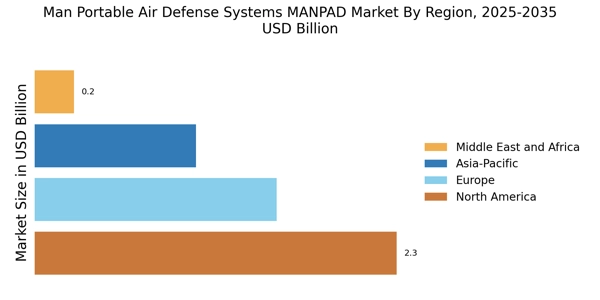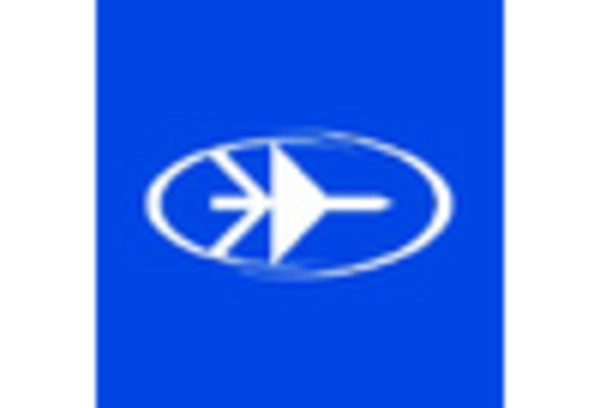Geopolitical Influences
Geopolitical tensions and conflicts are pivotal drivers of the Man Portable Air Defense Systems MANPAD Market. As nations face increasing threats from aerial attacks, the demand for effective air defense solutions is escalating. Countries in regions with ongoing conflicts or heightened military activities are particularly focused on enhancing their air defense capabilities. For example, the Middle East and Eastern Europe have seen a marked increase in military spending on MANPAD systems as a response to perceived threats. This trend suggests that geopolitical dynamics will continue to shape the market, with nations seeking to bolster their defense postures through the acquisition of advanced MANPAD technologies. The interplay of international relations and defense strategies is likely to sustain a favorable environment for market growth.
Increased Defense Budgets
The rising defense budgets across various nations are a crucial driver for the Man Portable Air Defense Systems MANPAD Market. Governments are allocating more resources to enhance their military capabilities, particularly in response to evolving security threats. According to recent data, defense spending has seen a consistent upward trend, with many countries prioritizing air defense systems in their procurement strategies. This increase in funding allows for the acquisition of advanced MANPAD systems, which are essential for protecting critical infrastructure and military assets. As nations recognize the importance of air defense in modern warfare, the market for MANPAD systems is poised for substantial growth, reflecting the broader trend of increased military expenditure.
Technological Advancements
The Man Portable Air Defense Systems MANPAD Market is experiencing a surge in technological advancements, which significantly enhances the effectiveness and efficiency of these systems. Innovations such as improved guidance systems, miniaturization of components, and enhanced targeting capabilities are becoming increasingly prevalent. For instance, the integration of infrared homing and laser guidance technologies has led to more accurate targeting, thereby increasing the success rate of intercepting aerial threats. Furthermore, the development of dual-use technologies, which can be adapted for both military and civilian applications, is expanding the market's potential. As nations prioritize the modernization of their defense capabilities, the demand for advanced MANPAD systems is likely to rise, indicating a robust growth trajectory for the industry.
Emerging Threats from Unmanned Aerial Vehicles
The proliferation of unmanned aerial vehicles (UAVs) poses new challenges for air defense, thereby driving the Man Portable Air Defense Systems MANPAD Market. As UAV technology advances, these aerial threats become more accessible and versatile, necessitating effective countermeasures. MANPAD systems are increasingly being adapted to target and neutralize UAVs, which are often used for reconnaissance and attack missions. The growing concern over the use of drones in asymmetric warfare and terrorism is prompting military forces to invest in MANPAD solutions that can effectively address these emerging threats. This shift in focus indicates a potential expansion of the market, as defense forces seek to enhance their capabilities against a new generation of aerial threats.
Increased Military Collaborations and Alliances
The formation of military collaborations and alliances is influencing the Man Portable Air Defense Systems MANPAD Market. As countries engage in joint defense initiatives, there is a growing emphasis on standardizing and integrating air defense systems. Collaborative efforts, such as joint exercises and shared procurement programs, are fostering the development and deployment of MANPAD systems that meet the collective needs of allied forces. This trend is particularly evident in regions where nations face common threats, leading to a more cohesive approach to air defense. The potential for shared technology and resources among allied nations is likely to enhance the capabilities of MANPAD systems, thereby driving market growth as countries seek to strengthen their collective defense strategies.



















Leave a Comment